SLAS538B October 2007 – November 2016 TLV320AIC34
PRODUCTION DATA.
- 1 Features
- 2 Applications
- 3 Description
- 4 Revision History
- 5 Description (continued)
- 6 Device Comparison Table
- 7 Pin Configuration and Functions
- 8 Specifications
-
9 Detailed Description
- 9.1 Overview
- 9.2 Functional Block Diagram
- 9.3
Feature Description
- 9.3.1 Hardware Reset
- 9.3.2 I2C Bus Debug In A Glitched System
- 9.3.3 Digital Audio Data Serial Interface
- 9.3.4 TDM Data Transfer
- 9.3.5 Audio Data Converters
- 9.3.6 Audio Clock Generation
- 9.3.7 Stereo Audio ADC
- 9.3.8 Digital Audio Processing For Record Path
- 9.3.9 Automatic Gain Control (AGC)
- 9.3.10 Stereo Audio DAC
- 9.3.11 Digital Audio Processing For Playback
- 9.3.12 Digital Interpolation Filter
- 9.3.13 Delta-Sigma Audio DAC
- 9.3.14 Audio DAC Digital Volume Control
- 9.3.15 Increasing DAC Dynamic Range
- 9.3.16 Analog Output Common-Mode Adjustment
- 9.3.17 Audio DAC Power Control
- 9.3.18 Audio Analog Inputs
- 9.3.19 Analog Input Bypass Path Functionality
- 9.3.20 ADC PGA Signal Bypass Path Functionality
- 9.3.21 Input Impedance and VCM Control
- 9.3.22 Passive Analog Bypass During Power Down
- 9.3.23 MICBIAS_x Generation
- 9.3.24 Digital Microphone Connectivity
- 9.3.25 Analog Fully Differential Line Output Drivers
- 9.3.26 Analog High-Power Output Drivers
- 9.3.27 Short-Circuit Output Protection
- 9.3.28 Jack or Headset Detection
- 9.3.29 Output Stage Volume Controls
- 9.4 Device Functional Modes
- 9.5 Programming
- 9.6 Register Maps
- 10Application and Implementation
- 11Power Supply Recommendations
- 12Layout
- 13Device and Documentation Support
- 14Mechanical, Packaging, and Orderable Information
Package Options
Refer to the PDF data sheet for device specific package drawings
Mechanical Data (Package|Pins)
- ZAS|87
Thermal pad, mechanical data (Package|Pins)
Orderable Information
10 Application and Implementation
NOTE
Information in the following applications sections is not part of the TI component specification, and TI does not warrant its accuracy or completeness. TI’s customers are responsible for determining suitability of components for their purposes. Customers should validate and test their design implementation to confirm system functionality.
10.1 Application Information
The TLV320AIC34 device is a four-channel, low-power audio codec for portable audio and telephony. It features integrated stereo headphone or line amplifier, as well as multiple inputs and outputs that are programmable in single-ended or fully differential configurations. All the features of the TLV320AIC34 are accessed by programmable registers. External processor with I2C protocol is required to control the device. The protocol is selectable with external pin configuration. It is good practice to perform a hardware reset after initial power up to ensure that all registers are in their default states. Extensive register-based power control is included, enabling stereo 48-KHz DAC playback as low as 15 mW from a 3.3-V analog supply, making it ideal for portable battery-powered audio and telephony applications.
10.2 Typical Application
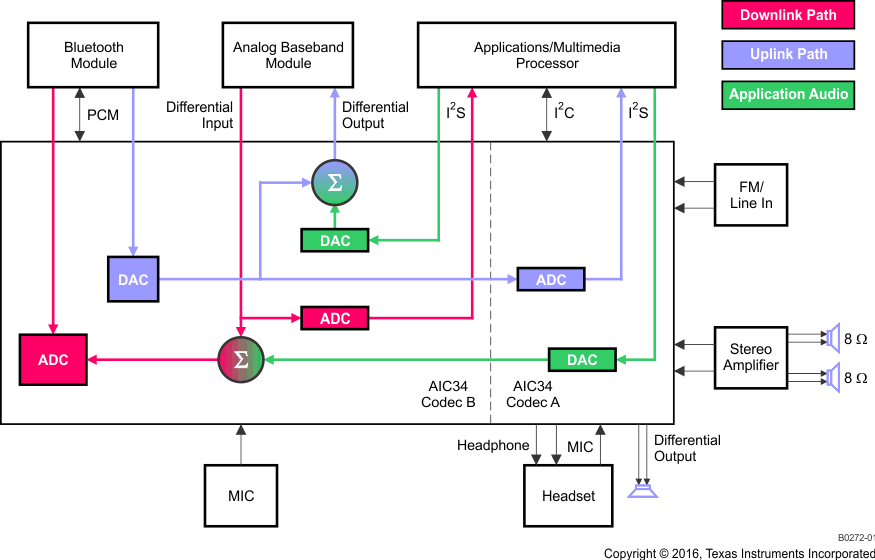 Figure 36. Bluetooth Call Recording Plus Application Audio Block Diagram
Figure 36. Bluetooth Call Recording Plus Application Audio Block Diagram
10.2.1 Design Requirements
Table 9 lists the design parameters for this application example.
Table 9. Design Parameters
| PARAMETER | VALUE |
|---|---|
| Supply voltage (AVDD, DRVDD) | 3.3 V |
| Supply voltage (DVDD, IOVDD) | 1.8 V |
| Analog high-power output driver load | 16 Ω |
| Analog fully differential line output driver load | 10 kΩ |
| Speaker output load resistance (Codec block A only) | 8 Ω |
10.2.2 Detailed Design Procedure
Using Figure 37 and Figure 38 as guides, integrate the hardware into the system.
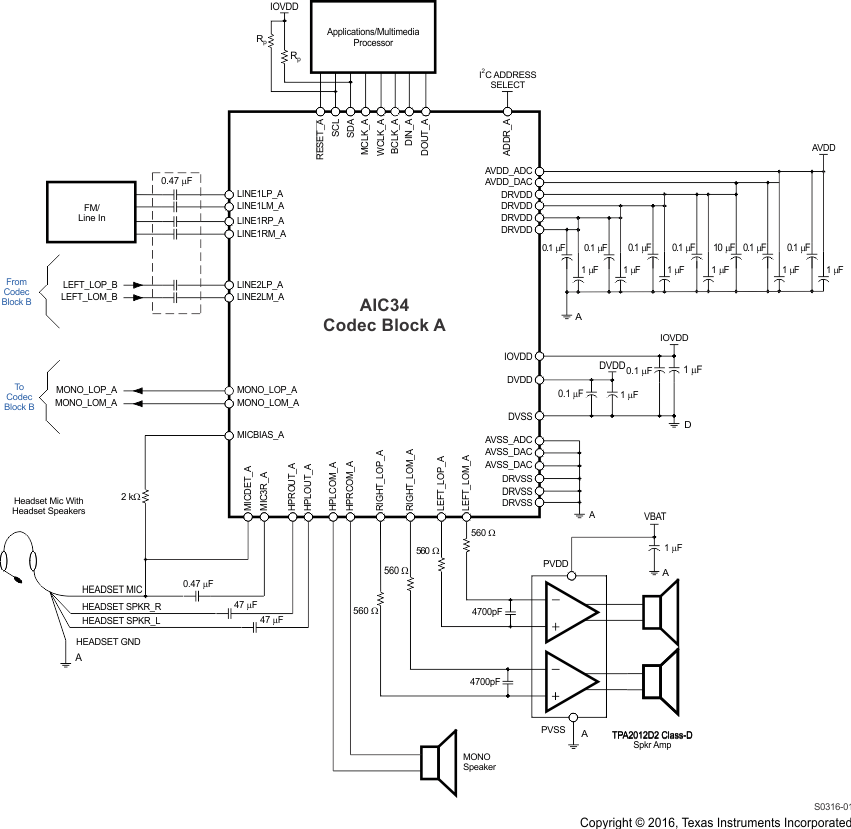 Figure 37. Typical Connections for TLV320AIC34 in Bluetooth Application (Sheet 1 of 2)
Figure 37. Typical Connections for TLV320AIC34 in Bluetooth Application (Sheet 1 of 2)
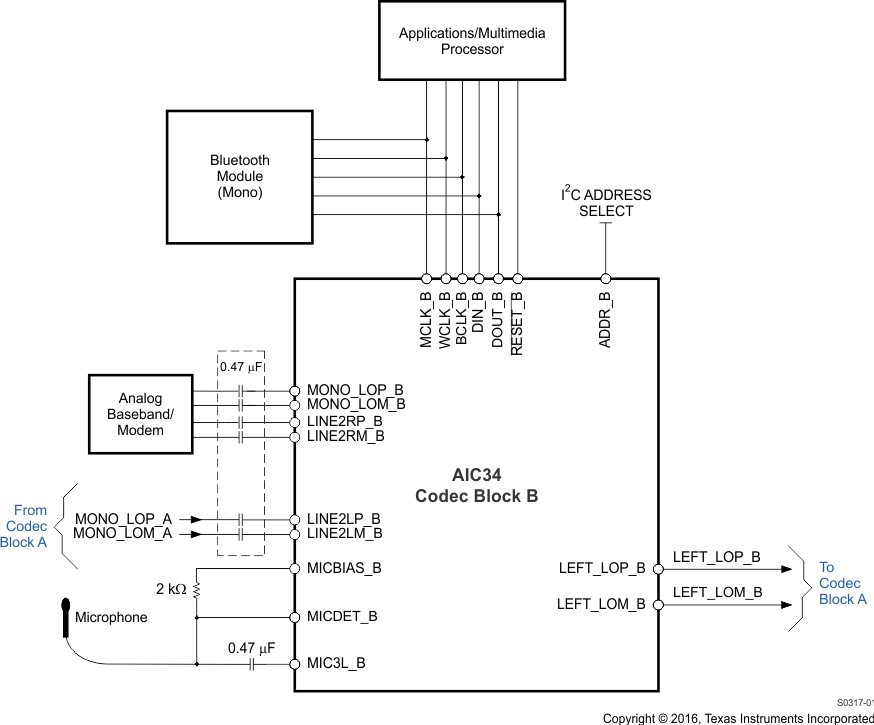 Figure 38. Typical Connections for TLV320AIC34 in Bluetooth Application (Sheet 2 of 2)
Figure 38. Typical Connections for TLV320AIC34 in Bluetooth Application (Sheet 2 of 2)
Following the recommended component placement, schematic layout and routing given in Layout. Integrate the device and its supporting components into the system PCB file. For questions and support, please visit the E2E forums (e2e.ti.com). If it is necessary to deviate from the recommended layout, visit E2E forum to request a layout review.
Determining sample rate and master clock frequency is required, because powering up the device as all internal timing is derived from the master clock. See Audio Clock Generation to get more information of how to configure correctly the required clocks for the device.
As the TLV320AIC34 is designed for low-power applications, when powered up the device has several features powered down. A correct routing of the TLV320AIC34 signals is achieved by a correct setting of the device registers, powering up the required stages of the device and configuring the internal switches to follow a desired route.
In cases where the TDM mode is required, it is necessary to ensure that all the devices take the samples at same time. So, TI recommends the following configuration steps to have all the TDM devices synchronized:
- Disable the I2S clocks (BCLK, WCLK)
- Apply a software reset
- Write the I2C commands for codec configuration (except unmuting the ADCs)
- Enable the I2S clocks
- Unmute the ADCs
For more information of the device configuration and programming, see the TLV320AIC34 technical documents section in ti.com (http://www.ti.com/product/TLV320AIC34/technicaldocuments).
10.2.3 Application Curves
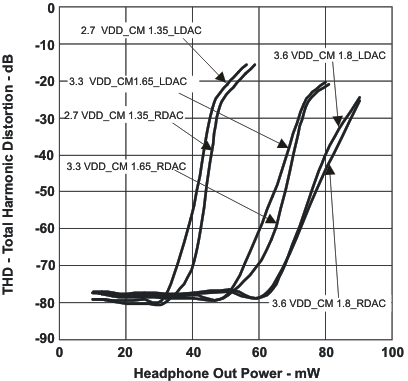 Figure 39. Total Harmonic Distortion
Figure 39. Total Harmonic Distortionvs Headphone Out Power
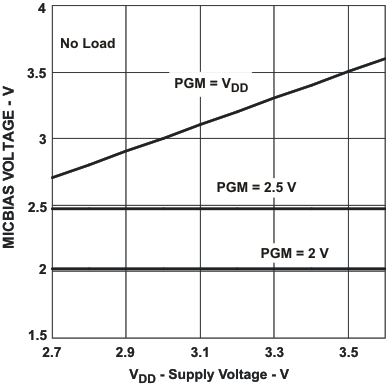 Figure 40. MICBIAS_x Voltage vs Supply Voltage
Figure 40. MICBIAS_x Voltage vs Supply Voltage